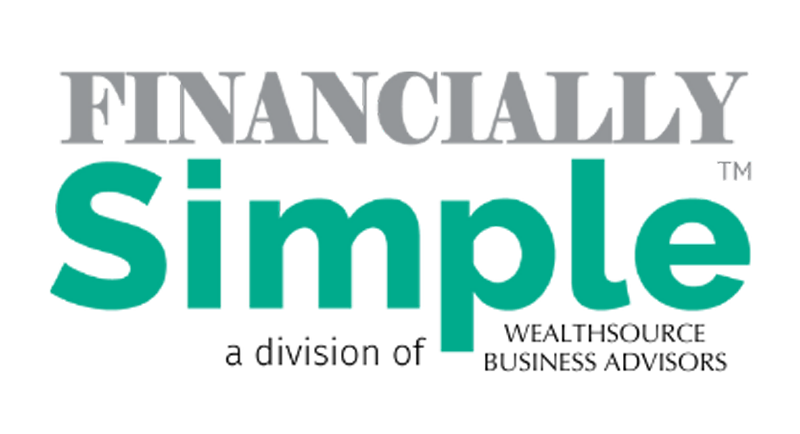
Calculating The Wealth Gap
November 5, 2020
Calculating Your Business’ ROI
November 17, 202010 Benefits of An Organizational Chart for Small Businesses

When I first started off, as a young entrepreneur, I didn’t really see the value in having organizational charts. I thought that they were a waste of time for small business owners. Since then, I have read thousands of books on business and just about every one of them speaks about the importance of organizational charts. So, with today’s post, I’m going to discuss the 10 benefits of an organizational chart.
Follow Along With The Financially Simple Experience!
TIME INDEX:
- 00:58 – 10 Benefits of Using an Organizational Chart in a Small Business
- 04:43 – A Visual Representation
- 05:23 – Hierarchy
- 06:23 – Clarification
- 06:51 – Positioning
- 07:56 – Employee Management
- 10:05 – Avoid Overlap
- 10:58 – Identify Tasks
- 11:54 – Workload Management
- 12:33 – Faster Decision Making
- 14:20 – Promotion Optimization
- 15:20 – Connecting the Dots
- 17:06 – Wrap Up
Benefits of Using An Organizational Chart
When I began thinking about this post, my mind immediately went to my dear friend and colleague, David Kent. David has a brilliant mind for business and is a gifted business advisor. He helps business owners all over the nation, myself included. One of the first things that David told me when we first began our business relationship, was that I had to get comfortable with the idea of using an organizational chart.
So, as I began researching this subject, David was the first person that I reached out to. Through our conversation, he helped me to identify ten very practical benefits of using an organizational chart in a small business. Without further ado, let’s dive into the 10 benefits of an organizational chart.
1. A Visual Representation
One of the very first and most obvious benefits of an organizational chart is that it provides your team with a visual representation of the corporate structure. This is important because it clears up any potential for confusion about where an employee fits into the corporate structure. Although small businesses may not have as many “levels” within their organizational chart, it’s still important for everyone to understand where they fit in and who to go to with questions.
2. Hierarchy
As I just mentioned, small businesses often don’t have as many levels as larger corporations. In many cases, the owner ends up wearing many different hats within their company. An organizational chart allows the owner to establish the hierarchy. Even if you’re doing the work of three or four different titles, there needs to be some clarification as to where one role ends and another begins. Likewise, you may be able to anticipate the future needs of your corporate structure by building the organizational chart, using titles as placeholders for future positions.
Additionally, establishing a hierarchy with the organizational chart can create fewer headaches for the business owner. Oftentimes, without an organizational chart, employees will go above their immediate supervisors and directly to the business owner when they have questions. This is because the owner is perceived to have all of the answers about the business. However, if the employee understands the hierarchy, they are more likely to respect the chain of command, leaving the business owner free to work on their business.
3. Clarification of Responsibility
Next, the organizational chart provides each employee with clarification pertaining to their individual roles. The chart defines their space and responsibility within the company. Moreover, this can actually help to create buy-in from your team as they are able to easily identify the ways that they are directly benefiting the business.
4. Quick Positioning
Whenever you’re onboarding a new team member, having an organizational chart for them to review is a quick and easy way to familiarize themselves with the company. In one quick move, they’ll be able to see the size of the company, who they will report to, where to direct questions, what their responsibilities are, and how what they do will impact the company.
5. Employee Management Data
I can’t tell you how many times we have seen business owners with their names on multiple levels of an organizational chart. One of the 10 benefits of an organizational chart is its ability to track and document the way that your organization has changed and grown over the years.
One year might show the business owner acting as the CEO and the CFO. However, as the company grows, the organizational chart will reflect that. Therefore, you may find that three years later the owner is simply acting as the owner and employing a designated CEO and CFO. So, another major benefit to having an organizational chart is the ability to manage the number of employees that you have and the positions that you will need for future growth.
6. Avoid Overlap
Efficiency is a vital component of successful businesses. In order to generate maximum revenues, every level of your company’s workflow must be hyper-efficient. An organizational chart can help you to become more efficient by avoiding overlap in responsibility. Because everyone’s role is clearly defined by the organizational chart, it’s very easy to identify areas of overlap, eliminating wasted time and effort.
7. Identify Tasks
Change is often one of the biggest challenges that we face. Any time business owners attempt to change things within their organizations, there is an inevitable pushback. However, change is often necessary for businesses to grow and become what they’re meant to be. This is yet another benefit to having an organizational chart. Once roles are clearly defined, you can add further clarity by identifying the tasks that each role is responsible for.
Many times, as the company grows, the tasks that people in certain roles are responsible for will change. Having an organizational chart, and keeping it updated, enables the team members to easily identify which tasks they are responsible for. This actually works in tandem with benefit number six to maintain operational efficiency.
8. Workload Management
Everyone wants to do a good job. A big part of that is being effective in the work that we do. Once again, the organizational chart enables the business owner and managers to see who is handling what, and to focus their efforts in a way that optimizes output and efficiency. By being able to see exactly who is responsible for each task, business owners can easily identify when one person or department is bogged down by too many responsibilities.
9. Faster Decision Making
As business owners, things come at us very quickly. We are often put in situations that require us to make split-second decisions that could have a lasting impact on our businesses. One of the 10 benefits of an organizational chart is that it enables us to make informed decisions faster than without it.
As the business grows, you may need to add to your team. Having that visual aid, helps you to create divisions within each department. Likewise, you can create these divisions without compromising the integrity of your outlined hierarchy. Each new division will know what they are responsible for and who they should report up to.
10. Optimized Promotions
Finally, having an organizational chart shows your team what their individual paths to promotion are. They can see how the company is structured and what the positions of need are. This can really generate buy-in and increase morale through opportunity, incentive, and motivation. Nobody wants to be stuck in a situation with no upward mobility. We all want the best lives for ourselves and our families. Likewise, we all want to be a part of something greater than ourselves. An organizational chart clearly shows your team how they can reach their goals within your company.
Wrapping Up…
There you have it, 10 benefits of an organizational chart. It’s amazing to me that something so simple can have such a deep impact on your business. The organizational chart really tells the story of your business. There’s a beginning, middle, and a future (the story doesn’t end until you want it to). With the organizational chart in place, you can see the progress you’ve made, where you’re currently at, and what it will take to get to where you want to be.
Friends, life is hard but life is good. Business ownership is often frustrating, but it’s still one of the greatest jobs in the world. By taking just a few minutes to create an organizational chart, you can make so many areas of your business, at least, financially simple.
If you have questions about how to format your own organizational chart or if you have any other areas of your business that need work, reach out to us. The team at Financially Simple is here to help.



